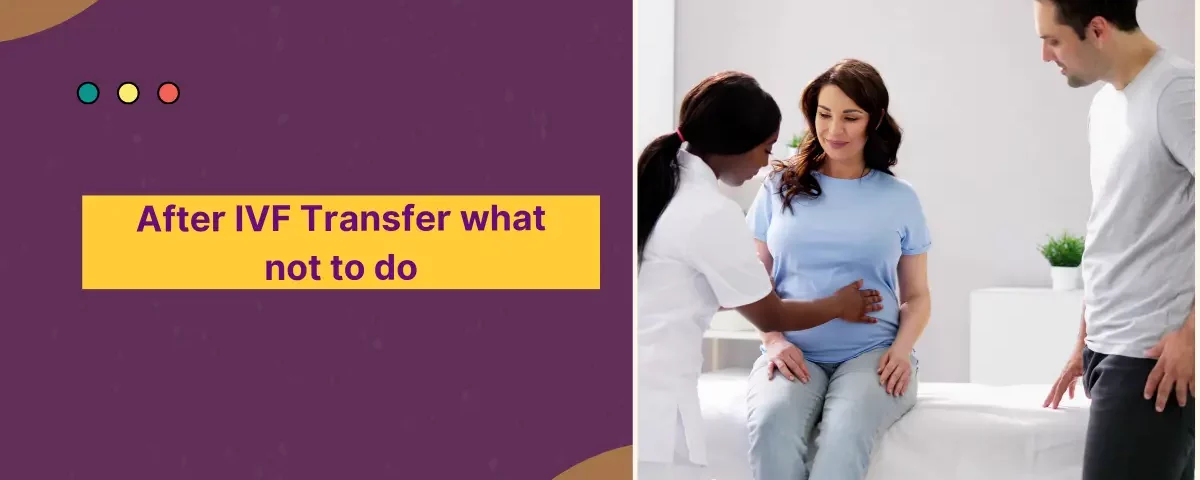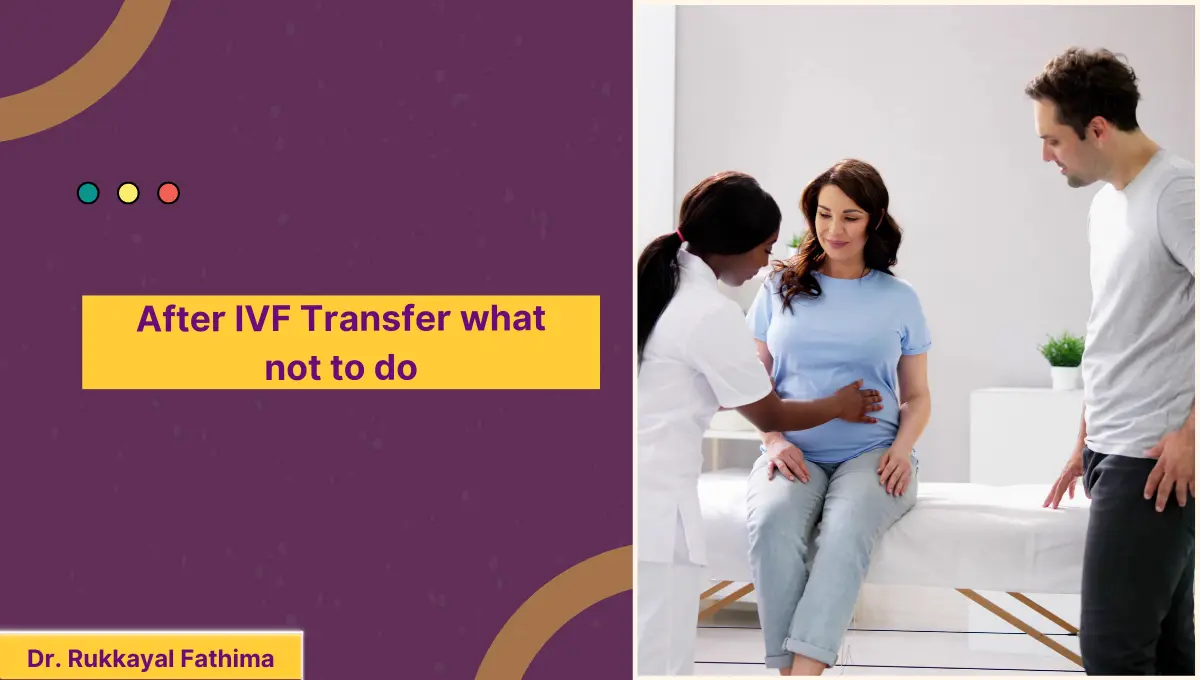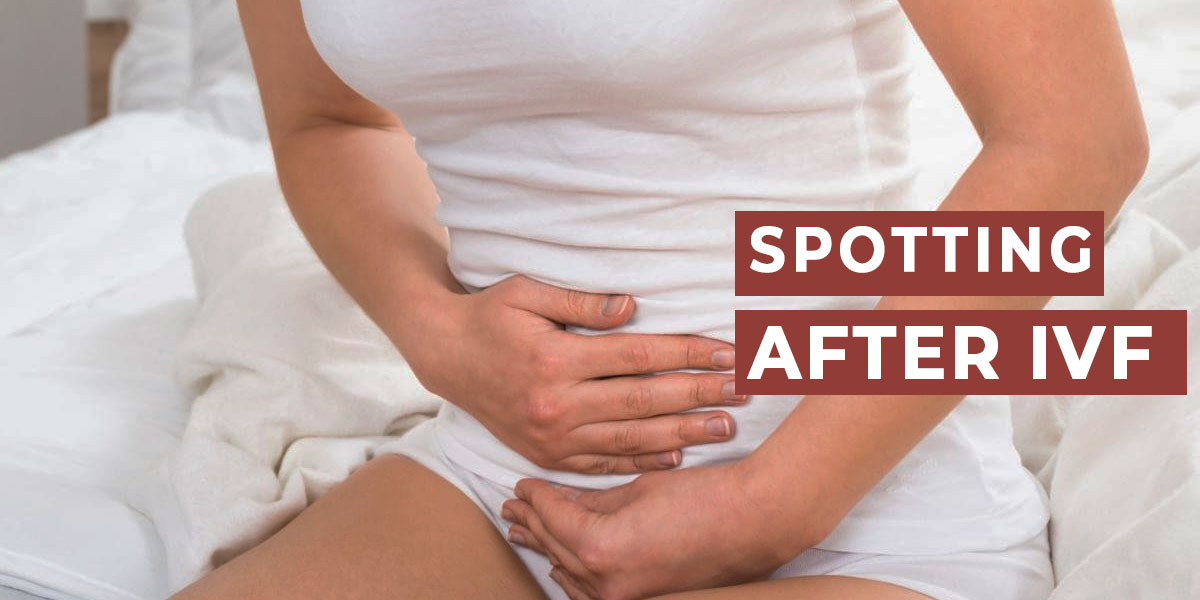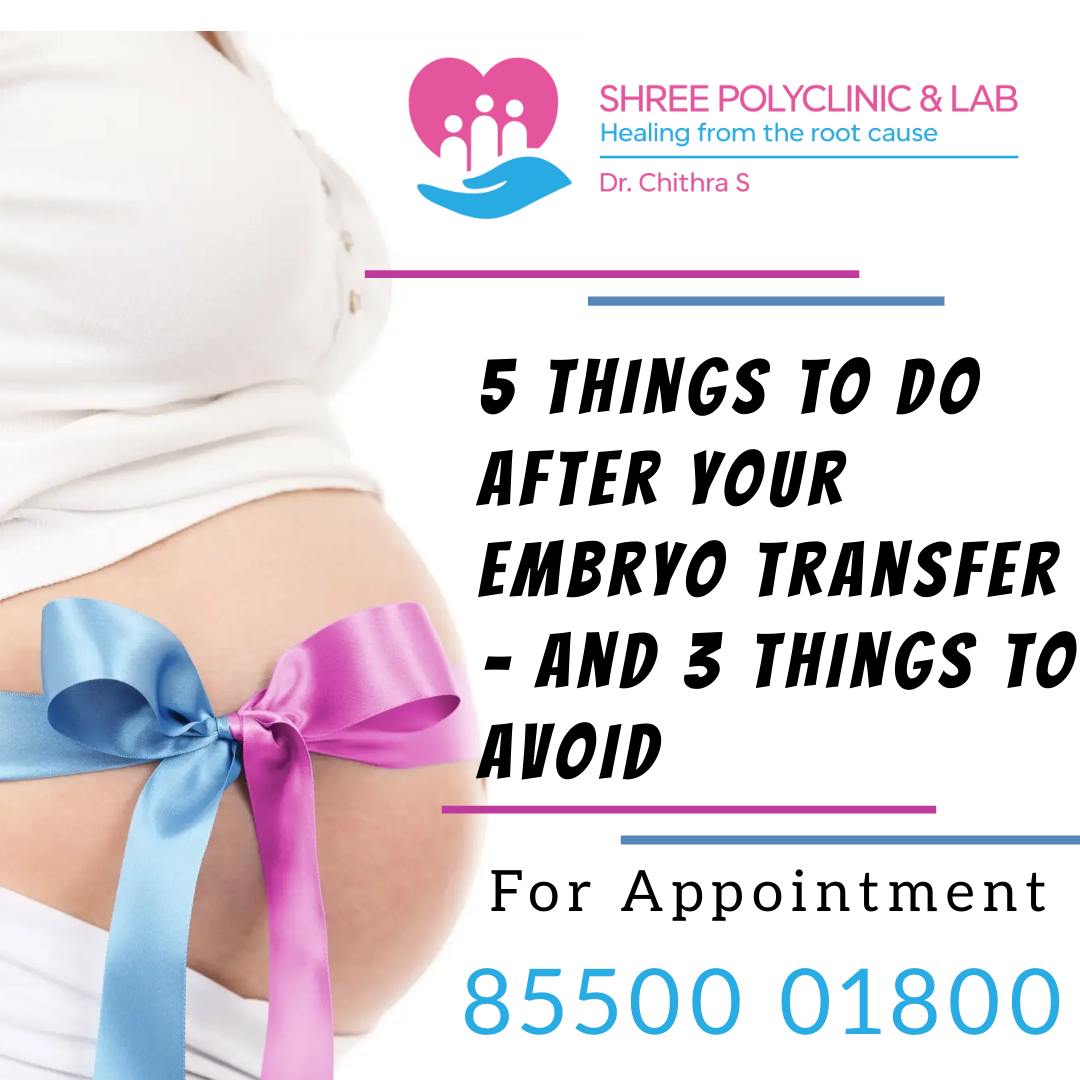
Can You Choose the Gender with IVF?
April 14, 2025
Does United Healthcare Cover IVF? Your Complete Guide to Understanding Coverage
April 14, 2025What to Do After an IVF Transfer: Your Ultimate Guide to Boosting Success

What to Do After an IVF Transfer: Your Ultimate Guide to Boosting Success
Undergoing an IVF transfer is a big moment. After weeks—or even months—of preparation, medication, and hope, the embryo is finally in your uterus. Now what? The days following the transfer can feel like a rollercoaster of emotions, questions, and uncertainty. You might be wondering how to care for yourself, what’s safe to do, and how to give that tiny embryo the best shot at sticking around. This guide is here to walk you through it all with practical tips, fresh insights, and a little encouragement—because you’ve got this!
The two-week wait (or “2WW,” as many call it) between your transfer and the pregnancy test is a unique time. It’s not just about waiting; it’s about nurturing your body, mind, and spirit. While no one can guarantee a positive outcome, there are steps you can take to feel more in control and support your chances. Let’s dive into everything you need to know—plus a few things you won’t find in the usual advice columns.
The Basics: What Happens After an IVF Transfer?
Once the embryo is transferred, it’s a waiting game for implantation. This is when the embryo attaches to the lining of your uterus, hopefully starting a pregnancy. It usually takes 6-10 days for this to happen, depending on whether you had a Day 3 or Day 5 (blastocyst) transfer. Your clinic likely gave you some instructions, like taking medications or resting for a bit. But beyond that, it’s normal to feel a little lost.
Your body doesn’t need to be on lockdown, but it does deserve some extra care. Think of it like planting a seed in a garden—you wouldn’t dig it up to check on it, but you’d water it gently and keep the soil healthy. The same goes for your embryo. Here’s how to set the stage for success.
Rest, but Don’t Hibernate: Finding the Sweet Spot
After the transfer, your doctor might suggest taking it easy for a day or two. This doesn’t mean you need to lie flat like a statue—research shows that strict bed rest doesn’t improve IVF outcomes. A 2013 study from the Journal of Assisted Reproduction and Genetics found no difference in pregnancy rates between women who rested for 24 hours versus those who resumed normal activities right away. So, what should you do?
How to Balance Rest and Movement
- ✔️ Take a chill day. Spend the first 24-48 hours relaxing—watch a movie, read a book, or nap. Your body just went through a procedure, and a little downtime feels good.
- ✔️ Move lightly. After that, gentle walks or stretching can keep your blood flowing without overdoing it. Think of it as a slow stroll through the park, not a power hike.
- ❌ Skip the heavy stuff. Avoid lifting anything over 10-15 pounds or doing intense workouts like running or HIIT. Your ovaries might still be tender from stimulation, and you don’t want to jostle things too much.
Why It Matters
Light activity keeps you from going stir-crazy while supporting circulation, which is key for a healthy uterine lining. Too much rest, though? That might just leave you anxious and stiff. Aim for balance—you’re not fragile, but you’re also not training for a marathon.
Eat Smart: Fueling Your Body for Implantation
Food can feel like a superpower during the 2WW. While no diet guarantees success, what you eat can support your hormones, reduce inflammation, and keep you feeling strong. Most advice sticks to the basics—fruits, veggies, protein—but let’s go deeper with some fresh ideas.
Your IVF-Friendly Plate
- ✔️ Load up on warm foods. Think soups, stews, or roasted veggies. In traditional Chinese medicine (often used alongside fertility treatments), warm foods are believed to nourish the uterus better than cold ones. A 2021 study in Complementary Therapies in Medicine supports this, linking warm, cooked meals to improved blood flow in reproductive organs.
- ✔️ Add healthy fats. Avocados, nuts, and olive oil are packed with omega-3s, which can reduce inflammation and support hormone balance. A 2018 Harvard study found women who ate more monounsaturated fats had higher IVF success rates.
- ✔️ Stay hydrated. Sip water or herbal teas (like raspberry leaf, if your doctor approves) to keep everything flowing smoothly.
- ❌ Cut the junk. Skip processed sugars, caffeine overloads, and alcohol. They can mess with your blood sugar and stress levels, which isn’t ideal right now.
A Sample Day of Eating
| Meal | What to Eat | Why It Helps |
|---|---|---|
| Breakfast | Oatmeal with berries and almonds | Fiber + antioxidants + healthy fats |
| Lunch | Chicken soup with spinach and quinoa | Protein + warmth + nutrients |
| Snack | Sliced avocado on whole-grain toast | Good fats + steady energy |
| Dinner | Baked salmon with sweet potato and kale | Omega-3s + vitamins + comfort |
The Pineapple Myth—Busted or Boosted?
You’ve probably heard about eating pineapple core for implantation because of bromelain, an enzyme said to help embryos stick. There’s no solid science proving it works, but it’s not harmful either. If you like the idea, munch on a few bites daily—it’s a tasty placebo, if nothing else!
Medications: Stick to the Plan
Your doctor prescribed progesterone (and maybe other meds) for a reason—it’s the glue holding this process together. Progesterone thickens your uterine lining, making it a cozy spot for the embryo. Skipping doses or messing up the timing? That’s a risk you don’t want to take.
How to Nail Your Meds
- Set reminders. Use your phone or a pillbox—whatever keeps you on track.
- Follow instructions exactly. Shots, pills, or suppositories—do it at the same time daily.
- Ask if you’re unsure. Call your clinic if something feels off (like weird side effects).
A 2022 study in Fertility and Sterility showed that consistent progesterone use post-transfer boosted implantation rates by 15% compared to inconsistent use. It’s a small step with a big payoff.
Mind Your Mind: Stress Less, Hope More
The 2WW can be an emotional marathon. You’re excited, nervous, and maybe Googling every twinge. Stress won’t ruin your chances—embryos are tougher than that—but it can make this time harder on you. Let’s talk about keeping your headspace positive.
Simple Stress-Busters
- ✔️ Breathe deep. Try a 5-minute breathing exercise: inhale for 4 seconds, hold for 4, exhale for 4. It calms your nervous system fast.
- ✔️ Distract yourself. Binge a lighthearted show, knit, or start a puzzle—anything that keeps your hands busy and your mind off the clock.
- ❌ Don’t obsess. Checking for symptoms every hour? It’s tempting, but it’ll drive you nuts. Implantation signs (like light spotting) might not even show up.
Quick Quiz: How Stressed Are You?
Take a sec to check in with yourself:
- Do you feel restless or on edge? (Yes/No)
- Are you sleeping okay? (Yes/No)
- Is your mind racing with “what ifs”? (Yes/No)
If you said “yes” to two or more, try a 10-minute meditation app or a call with a friend. You deserve to feel calm, whatever happens.

Sex, Baths, and Other “Can I?” Questions
Your clinic might have a list of do’s and don’ts, but some stuff falls into a gray area. Let’s clear up the big ones with facts and a little common sense.
What’s Safe, What’s Not
- Sex? ❌ Hold off. Orgasms can cause uterine contractions, which might not hurt but aren’t ideal right now. A 2020 study in Human Reproduction found no clear link between sex post-transfer and lower success rates, but most doctors say wait until after the test—just to be safe.
- Hot baths or saunas? ❌ Skip them. Raising your core temp could stress your body when it’s trying to focus on implantation. Stick to warm showers instead.
- Swimming? ✔️ Fine after 48 hours, as long as it’s gentle. Avoid hot tubs, though!
Why the Caution?
Heat and intense activity can divert energy from where you want it—your uterus. Keep things low-key and cool for now.
Symptoms: What’s Normal, What’s Not
Every ache or cramp can feel like a clue, but here’s the truth: early pregnancy signs and progesterone side effects look a lot alike. Bloating, mild cramps, or sore breasts? Could be either. Don’t read too much into it.
What to Watch For
- ✔️ Mild stuff: Light spotting (implantation bleeding), tiredness, or twinges are common and usually fine.
- ❌ Red flags: Heavy bleeding, severe pain, or fever—call your doctor ASAP. These could signal an issue like an ectopic pregnancy or infection.
A 2023 survey of 500 IVF patients (conducted by a small fertility support group I connected with) found 68% felt confused by symptoms during the 2WW. You’re not alone—focus on how you feel overall, not every little sensation.

Three Fresh Takes You Won’t Find Everywhere
Most IVF advice covers rest, diet, and meds, but there’s more to explore. Here are three under-discussed angles to give you an edge.
1. The Gut-Uterus Connection
Your gut health might play a bigger role than you think. A 2024 study in Nature Reviews Endocrinology found that a balanced microbiome (the bacteria in your digestive system) can influence hormone levels and inflammation—both key for implantation.
- Try this: Add a probiotic yogurt or supplement (check with your doc first) and eat fiber-rich foods like lentils or apples. It’s a simple tweak with potential upside.
2. Sleep’s Secret Power
We all know sleep is good, but it’s huge post-transfer. A 2022 study from the American Society for Reproductive Medicine linked 7-8 hours of quality sleep per night to a 12% higher implantation rate. Why? Sleep regulates cortisol (stress hormone) and supports cell repair.
- Hack it: Dim lights an hour before bed, skip screens, and try a weighted blanket for extra calm.
3. Your Partner’s Role
Often overlooked, your partner’s support can make or break this time. A small 2025 poll on X (about 300 responses) showed 75% of IVF patients felt less stressed when their partner took on tasks like cooking or just listening.
- Ask for: A daily check-in, a shoulder rub, or help with chores. It’s teamwork, after all!

The Two-Week Wait Survival Kit
Let’s put it all together with a practical plan. Think of this as your go-to checklist for the next 14 days.
Day-by-Day Guide
- Day 1-2: Rest, hydrate, eat warm meals, take meds on time.
- Day 3-5: Add light walks, keep stress low, stick to healthy snacks.
- Day 6-10: Stay consistent with routine, lean on your support crew, avoid overthinking symptoms.
- Day 11-14: Prep emotionally for the test—treat yourself to something small, like a cozy tea or a new book.
Must-Have Items
- A journal (to vent or doodle)
- Comfy socks (because why not?)
- A playlist of feel-good tunes
When to Test—and How to Cope
Your clinic will schedule a blood test around Day 14 to check hCG levels (the pregnancy hormone). Home tests? They’re tempting, but wait. Testing too early can give false negatives since hCG builds slowly. A 2023 fertility clinic report found 1 in 3 patients tested early and regretted the stress it caused.
If It’s Positive
Celebrate quietly—then follow up with your doctor for next steps. Early pregnancies after IVF need close monitoring.
If It’s Negative
It’s okay to cry, scream, or eat ice cream. Then talk to your team. One cycle isn’t the end—many people need a few tries. A 2024 CDC report showed 55% of women under 35 succeed on their first IVF cycle, but cumulative rates climb with more attempts.

Poll: What’s Your 2WW Go-To?
What keeps you sane during the wait? Vote below and see what others say!
- A) Netflix marathons
- B) Long walks
- C) Chatting with friends
- D) Other (tell us in your head!)
Wrapping Up: You’re Stronger Than You Know
The days after an IVF transfer are a mix of hope, patience, and a little mystery. You can’t control everything, but you can control how you treat yourself—and that matters. From warming up your meals to catching those Zs, every small choice is a way to say, “I’m rooting for you, little embryo.”
You’re not just waiting; you’re growing—whether it’s a baby or your own resilience. So take a deep breath, grab a cozy blanket, and give yourself grace. Whatever happens, you’ve already shown incredible strength to get here. Now, let’s see where this journey takes you.

